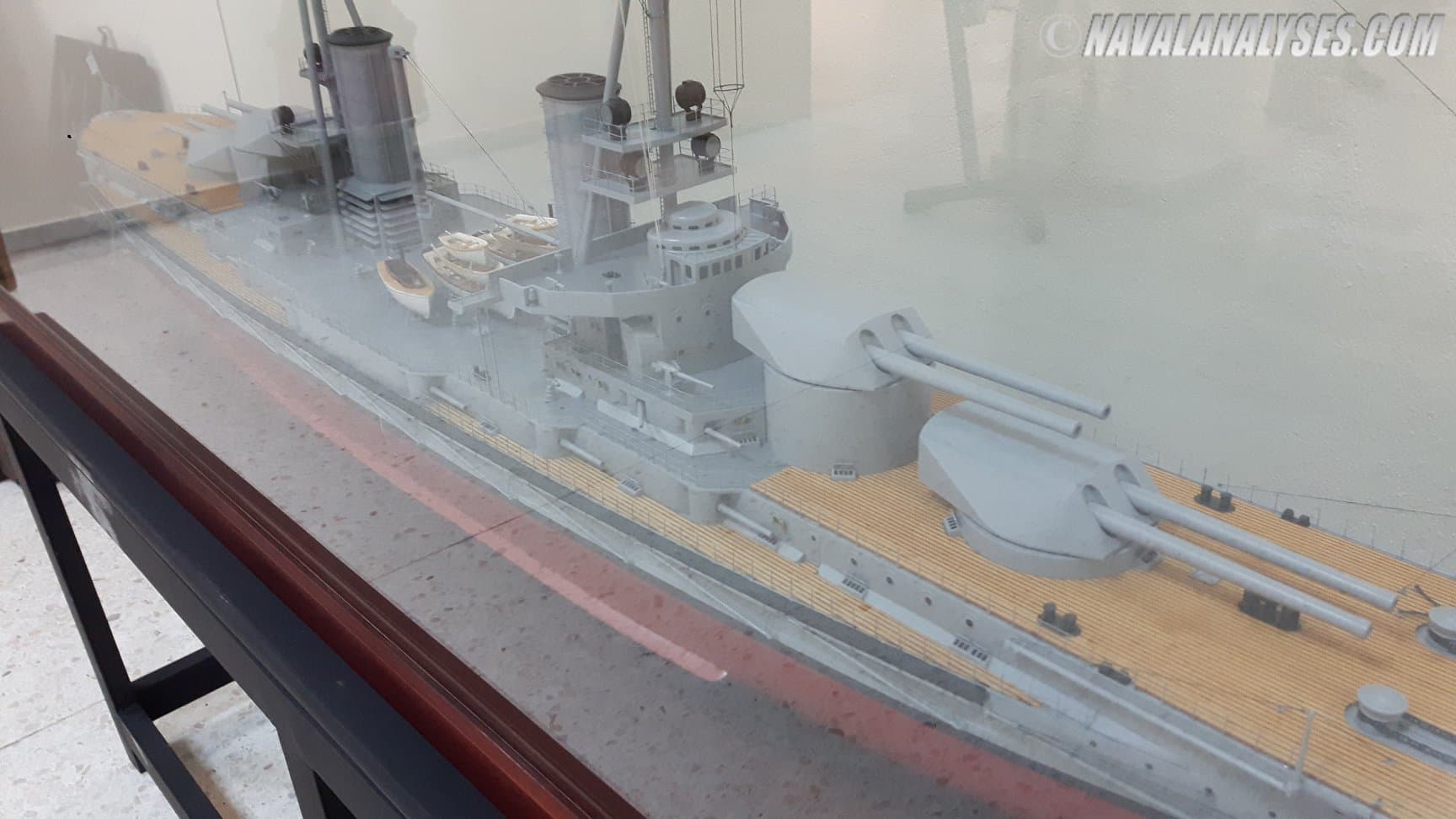- Yes
- No

TL;DR:
Bluewater vessel, unfinished Greek super dreadnought with thin armour. No AA at all.
Overview:
In the early 20th century, Greece and the Ottoman Empire were in the midst of a naval arms race, each side ordering powerful cruisers and battleships. When the Ottoman Navy ordered the dreadnought battleship Reşadiye from Britain in 1911, the Greek Navy had to respond. The contract for their own battleship was awarded to the German Vulcan Shipyard, named Salamis. After the first Balkan War, the naval race intensified, and the Greeks wanted the ship’s design to be enlarged, with a new design adopted in December 1912, increasing its displacement from 13 500t to 19 500t with another gun turret added. The ship was fast but somewhat poorly armoured, with the original design sometimes referred to as a battlecruiser, but the firepower of its 356mm guns would allow it to outgun the Ottoman Reşadiye with only 305mm guns. To this new design, construction began in 1913, with the armament ordered from the American Bethlehem Steel company. The same year, the Ottoman Empire bought an incomplete Brazilian dreadnought, and the Greek government was sent into a panic. They urged Vulcan to speed up construction, but even then the earliest year of completion would be 1915, so they ordered 2 modified Bretagne-class battleships from France and purchased 2 American pre-dreadnoughts in the meantime to bolster their forces.
Ultimately, the entire naval arms race collapsed when the Great War broke out. Britain seized the Ottoman battleships under construction, commissioning them themselves, while also blockading Germany, preventing the ordered guns from arriving. The French battleships were paused in 1914 and later cancelled, and the American pre-dreadnoughts were of very dubious use anyhow. The ship was launched in 1914, but without the armament construction work stopped. Those guns would ironically later be purchased by Britain for use in their Abercrombie-class monitors and coastal defence forts. The ship waited the war out in Hamburg, with no attempt by the Germans to complete the ship for themselves, as the design did not fit German naval requirements and they were busy enough with their own battleships. Post-war, the incomplete hull was to be handed over to the Greeks but they refused to accept it, and the Vulcan Shipyard sued the Greek government, winning 30 000 pounds in the process. The yard offered again to complete the ship with modernizations, which would be more than a match for the Turkish battlecruiser Yavuz, but the Greeks rejected the offer deeming it too expensive and opted for torpedo craft and submarines instead. In 1932 the hull would be scrapped.
Specifications: (Project)
Armament:
4x2 14-inch (356mm)/45 Bethlehem
12x1 6-inch (152mm)/45 Bethlehem QF
12x1 3-inch (76mm)/50 Bethlehem QF Mk J
3x1 500mm Underwater torpedo tubesArmour: (Krupp cemented steel)
250mm Turrets
300mm Barbettes
100-250mm Belt
180mm Fore and aft bulkheads
12.5-30mm Deck
300mm Conning TowerDisplacement:
19 500t standard
21 500t fullLength: 173.7m (wl)
Beam: 24.7m
Draft: 7.6 m
Propulsion: 3 AEG-Parsons geared steam turbine with 18 Yarrow boilers, 40 000 hp, driving 3 shafts
Speed: 23 knots (42.6 km/h)
Range: unknown
Crew: unknown
Systems:
Rangefinders
Images:
Sources:
Gardiner, R., & Scheina, R. L. (1997). Greece. In Conway’s all the world’s Fighting Ships 1906-1921 (p. 384). Conway Maritime Press.
Nottelmann, D. (2020). From Ironclads to Dreadnoughts: The Development of the German Navy 1864–1918 Part XB. Warship International, 57(1), 49–55. https://www.jstor.org/stable/27142910
SALAMIS battleship
Greek battleship Salamis - Wikipedia
Naval Analyses
x.com





